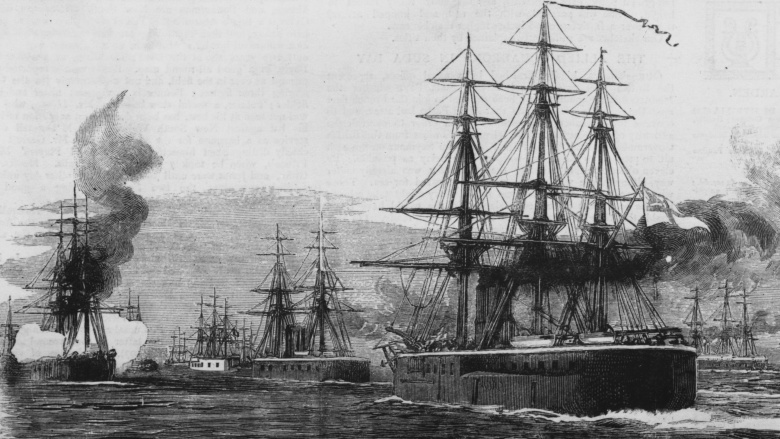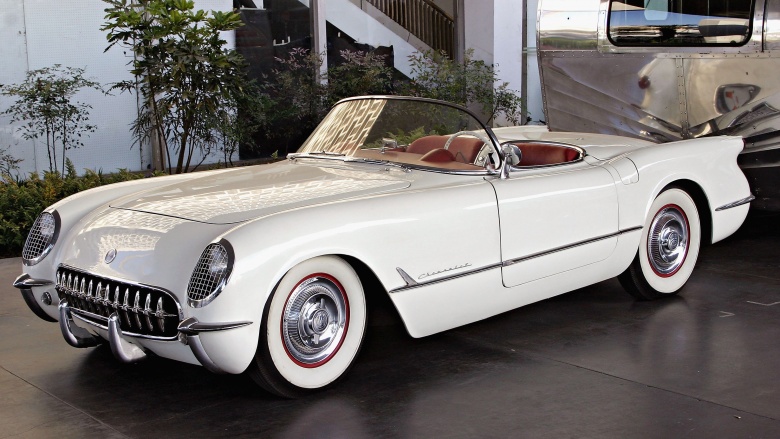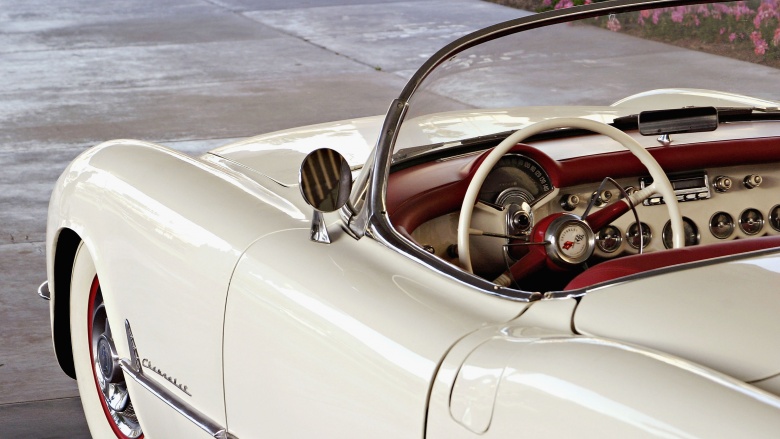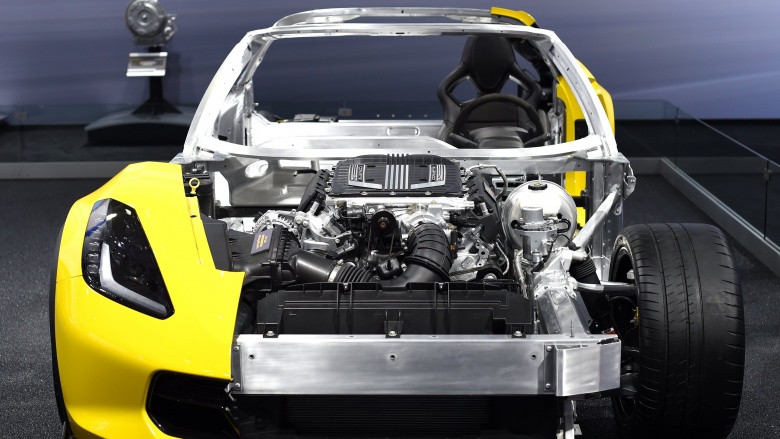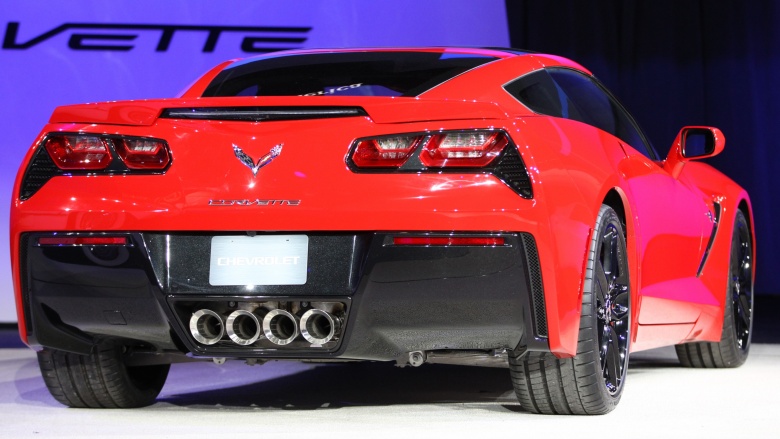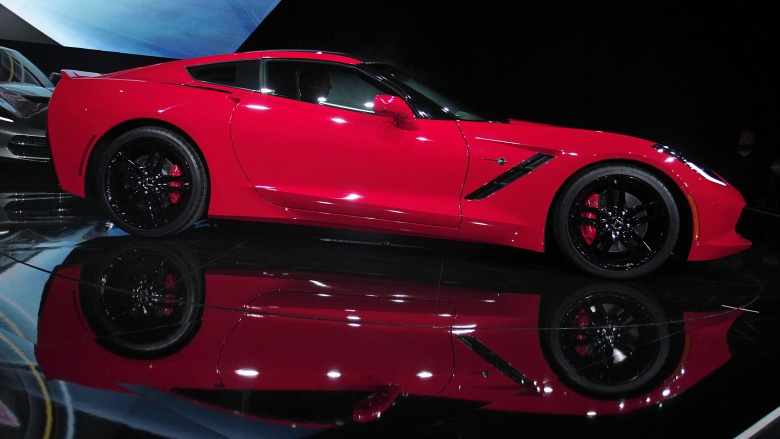You Never Knew This About The Chevrolet Corvette
The Chevrolet Corvette is one of America's most iconic sports cars. And although sales started out slow, it didn't take long after production started in 1953 for the public to see the rubber on the road and want a piece of that action for themselves. Despite notching up its sixth decade in 2016, it's no closer to retirement than it was on day one. Here are a few things you may not have known about the Chevrolet Corvette.
Life started in the ocean
The word "corvette" might now be synonymous with the American sports car, but it spent a lot longer applied to something else entirely. "Corvette" is actually a French word that describes a class of small warship. The word is still used in that context throughout much of the rest of the world, but since most English-speaking navies don't actually use any sea-faring corvettes these days, when confronted with the term, most people will probably think of the dry meaning before the wet one. And while other nautical terms like "battleship" and "frigate" would look a bit odd scrawled across the back of a car, "corvette" is one of the few that works, because like the car, the naval corvette is small, aggressive, and maneuverable—and uncomfortable on long journeys.
No options as standard
Production of the first model Corvette started in June 1953, but it wasn't actually meant to. A pre-production model of the Corvette had been exhibited at a New York motor show, and the response had been so positive, that Chevy decided to push ahead and capitalize on the buzz. As a result, only 300 were made in 1953, and they were all hand-built—but the numbers weren't the only thing that was limited. If you ordered a Chevy Corvette in 1953, your favorite colors had better be white and red, because that was the only combination available. White on the outside and red inside, or nothing. But since there were only 300 available, most people got the nothing.
More "options"
Just because the outside had to be white, and the inside had to be red, didn't mean the owner of a '53 Vette didn't get some choices. Every car comes with options, and the first model Corvette was no exception; they just weren't very exciting. After spending $3,498 on the car, you then got a choice of—wait for it—two options. Yes, two. But from a modern perspective, describing them as "options" might be a bit shocking. Because the first option, for an additional $145, was an AM radio (nearly $1,300 in 2016 money!). But hey, no one buys a Corvette for the sound system anyway, right? The second "option," for an extra $91 (around $800 today) was a heater. The car might have been built in Michigan, but it definitely wasn't designed by anyone living there.
High-fiber diet
The designers of the first Corvette might have been cautious with the extra features, but one thing they weren't cautious with was innovation. Right from the start, the bodywork of the Corvette was built from fiberglass. The car was initially intended to have an ordinary steel body, and fiberglass was only used on the show models as an expedient way to get them out the door. But by the time production of the vehicle started, Chevy had come to recognize the practicality of the then-revolutionary material and kept it in the design when assembly began in earnest. Many vehicle engineers of the time thought fiberglass was too weak to build a car body, and claimed it wouldn't stand up to serious impacts. But reassurances from the fiberglass industry, and a few crash tests, put paid to early doubts, and fiberglass bodywork has been standard issue ever since. More recent models of the Corvette include parts made from carbon fiber, and while that might help reduce weight and increase the "Oooh" factor, unfortunately it also increases the number of zeroes you can add to the car's final price.
In the year of our lord 1983...
It's often claimed that the Corvette has been in continuous production since 1953, and that might be true. But just because it's been built every year since then, doesn't mean it's been on sale every year. There were so many issues with the development of the 1983 model, that after building 43 prototypes the production for that year was simply cancelled. All but one of the prototypes were either converted to 1984 models, or destroyed. The one remaining example of the 1983 Corvette is kept on display at the Corvette museum in Bowling Green, Kentucky. And either God hates it, or the Devil loves it, because it was almost lost to this world in 2014 when a sinkhole opened up under the museum, swallowing eight Corvettes.
Can you back that up?
The Chevrolet Corvette is a sports car, and like most sports cars, if you put your foot down things start to happen fast. Unlike most sports cars however, the Corvette knows how to do fast so well that it can do it backwards as well as forwards. For some reason, the 2014 Corvette Stingray is capable of going a surprising 53 miles per hour in reverse—which is about 53 times faster than most people want to do it.
Take a load off
Passing slow drivers in reverse is not the only unexpected talent of the 2014 Corvette, because the designers have found an innovative way to save you money on the highway. Since 1955, Corvettes have always been equipped with a V8 engine. While that works out great when you're running from the cops, or drag racing for pink slips, but that's a lot more bang than you need for your buck when you're just cruising along the highway at average speeds. And so, in the 2014 Corvette, when you're cruising along in no particular hurry, four of the engine's eight cylinders stop working and put their feet up. Because of the vehicle's aerodynamic shape and low rolling resistance, four cylinders are plenty to keep the car moving along at normal speeds. But when you see the flashing blue lights in your rear view mirror, simply put your foot down and the sleeping cylinders will jump back into action to help get you the heck out of dodge. All this adds up to the remarkable combination of 460 horsepower, and a fuel-consumption of 30 miles per gallon highway. The Chevrolet Corvette: now the fastest and cheapest way to get you a speeding ticket.

